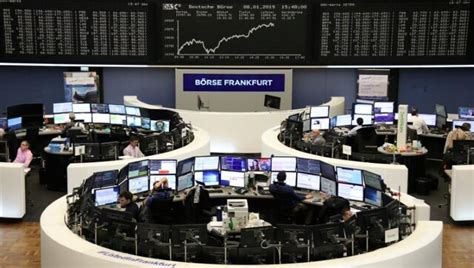
Nvidia’s upcoming earnings report on May 22nd after market close will be a pivotal moment for the AI chip giant, potentially solidifying its dominance or exposing vulnerabilities amidst intense competition and high expectations. Investors are keenly focused on whether Nvidia can sustain its exponential growth trajectory in the data center segment, fueled by the surging demand for AI-related hardware, and how it will navigate increasing competition from rivals like AMD, Intel, and internal solutions from major cloud providers. The report will provide critical insights into the company’s supply chain resilience, gross margin sustainability, and forward-looking guidance, shaping investor sentiment and influencing the broader tech market.
Nvidia (NVDA) has become synonymous with the artificial intelligence revolution, its graphics processing units (GPUs) powering everything from large language models to autonomous vehicles. The company’s meteoric rise has been driven by insatiable demand for its high-performance chips, particularly in data centers, where they are used to train and deploy AI algorithms. As Nvidia prepares to release its fiscal first-quarter earnings report, Wall Street is abuzz with anticipation and a healthy dose of skepticism. The question on everyone’s mind: can Nvidia live up to the sky-high expectations baked into its stock price?
The company’s previous earnings reports have consistently surpassed expectations, leading to a surge in its stock price. In fiscal year 2024, Nvidia’s revenue skyrocketed to $60.9 billion, an increase of 126% year-over-year, with a significant portion attributed to its data center business. For the upcoming report, analysts project revenue of around $24.6 billion, representing another substantial increase.
However, this rapid growth also brings increased scrutiny. Investors are concerned about several key factors that could impact Nvidia’s future performance. These include:
- Supply Chain Constraints: Can Nvidia maintain a steady supply of its chips to meet the overwhelming demand?
- Competition: How will Nvidia fare against increasingly competitive offerings from AMD, Intel, and internal AI chip development from hyperscalers like Amazon, Google, and Microsoft?
- Gross Margins: Can Nvidia sustain its high gross margins in the face of rising costs and potential price wars?
- Geopolitical Risks: How will export restrictions and escalating tensions between the US and China affect Nvidia’s sales and operations?
- Valuation: Is Nvidia’s stock price justified given the inherent risks and uncertainties?
Data Center Dominance Under Threat?
Nvidia’s data center business has been the primary engine of its growth, accounting for a significant portion of its revenue. The demand for its GPUs in this segment is driven by the increasing adoption of AI across various industries, including cloud computing, healthcare, finance, and automotive. However, this dominance is not guaranteed.
AMD is emerging as a formidable competitor, with its MI300 series of AI accelerators posing a direct challenge to Nvidia’s H100 and H200 GPUs. Intel is also investing heavily in its AI chip development, with its Gaudi series targeting similar applications. Furthermore, major cloud providers like Amazon (AWS), Google (TPU), and Microsoft are developing their own custom AI chips, aiming to reduce their reliance on external suppliers and optimize performance for their specific workloads.
“The increasing competition in the AI chip market is a major concern for Nvidia,” says Stacy Rasgon, an analyst at Bernstein Research. “While Nvidia currently enjoys a significant lead, its competitors are closing the gap rapidly. It remains to be seen whether Nvidia can maintain its market share in the long run.”
The pressure from internal chip development, particularly from the hyperscalers, could significantly impact Nvidia’s growth trajectory. These companies are among Nvidia’s largest customers, and if they successfully develop their own competitive AI chips, they could reduce their reliance on Nvidia’s offerings.
Supply Chain Resilience: A Critical Factor
Nvidia’s ability to meet the overwhelming demand for its chips depends heavily on the resilience of its supply chain. The company relies on Taiwan Semiconductor Manufacturing Company (TSMC) for the manufacturing of its GPUs. TSMC is the world’s leading semiconductor foundry, but it is also operating at near-full capacity, leading to concerns about potential bottlenecks.
Any disruption to TSMC’s operations, whether due to natural disasters, geopolitical tensions, or technological challenges, could have a significant impact on Nvidia’s ability to fulfill orders. Moreover, securing access to advanced packaging technologies, such as chip-on-wafer-on-substrate (CoWoS), which are crucial for high-performance AI chips, is becoming increasingly competitive.
“Supply chain constraints remain a major challenge for Nvidia,” notes Harsh Kumar, an analyst at Piper Sandler. “While the company has taken steps to diversify its supply chain, it is still heavily reliant on TSMC. Any disruption to TSMC’s operations could have a significant impact on Nvidia’s revenue and profitability.”
Nvidia CEO Jensen Huang has repeatedly emphasized the company’s efforts to secure its supply chain, working closely with TSMC and other suppliers to ensure a steady flow of components. However, the situation remains fluid, and investors will be closely watching for any signs of supply chain disruptions in the upcoming earnings report.
Gross Margin Sustainability: The Price of Growth
Nvidia’s high gross margins have been a key driver of its profitability and stock price appreciation. In recent quarters, the company has reported gross margins above 70%, reflecting the high demand for its premium AI chips and its ability to command premium prices. However, sustaining these high margins in the face of rising costs and increasing competition will be a challenge.
The cost of manufacturing advanced GPUs is increasing due to the complexity of the chips and the rising cost of materials. Furthermore, as competitors enter the market, Nvidia may be forced to lower its prices to maintain market share, which could erode its gross margins.
“The sustainability of Nvidia’s gross margins is a major concern,” says Timothy Arcuri, an analyst at UBS. “As competition intensifies, Nvidia may have to sacrifice some of its profitability to remain competitive. We are closely watching for any signs of margin compression in the upcoming earnings report.”
Nvidia has argued that its superior technology and strong brand loyalty allow it to maintain premium pricing. The company also emphasizes its focus on value-added services and software, which contribute to its overall profitability. However, the market dynamics are changing rapidly, and investors will be scrutinizing Nvidia’s gross margins to assess its long-term competitive position.
Geopolitical Risks: A Growing Concern
Geopolitical tensions, particularly between the US and China, pose a significant risk to Nvidia’s business. The US government has imposed export restrictions on advanced AI chips to China, aimed at preventing the country from developing advanced military technologies. These restrictions have already impacted Nvidia’s sales in China, which is a major market for its products.
Furthermore, escalating tensions between the US and China could lead to further restrictions on trade and investment, which could disrupt Nvidia’s supply chain and impact its ability to operate in China. The company is also facing increasing scrutiny from Chinese regulators, which could lead to delays in product approvals and other regulatory challenges.
“Geopolitical risks are a growing concern for Nvidia,” warns Angelo Zino, an analyst at CFRA Research. “The export restrictions on AI chips to China are already impacting Nvidia’s sales, and further escalation of tensions could have a significant impact on its business. We are closely monitoring the situation and its potential impact on Nvidia’s long-term growth prospects.”
Nvidia has been developing alternative AI chips that comply with US export regulations, but it remains to be seen whether these products will be as competitive as its flagship offerings. The company is also exploring opportunities to diversify its geographic presence, but it is likely to remain heavily reliant on the Chinese market for the foreseeable future.
Valuation: Justifying the Premium
Nvidia’s stock price has soared in recent years, reflecting the company’s rapid growth and its dominant position in the AI chip market. However, this meteoric rise has also raised concerns about valuation. Nvidia’s stock is trading at a significant premium to its peers, and investors are questioning whether this premium is justified.
The company’s high valuation reflects the market’s expectations for continued rapid growth. If Nvidia fails to meet these expectations, its stock price could suffer a significant correction. Furthermore, the stock is highly sensitive to changes in investor sentiment, and any negative news or disappointing earnings report could trigger a sell-off.
“Nvidia’s valuation is a major concern,” says Pierre Ferragu, an analyst at New Street Research. “The stock is trading at a significant premium to its peers, and this premium is only justified if Nvidia can maintain its rapid growth trajectory. We are closely watching the upcoming earnings report to assess whether Nvidia can continue to deliver the exceptional results that the market is expecting.”
Nvidia bulls argue that the company’s dominant position in the AI chip market, its strong growth prospects, and its innovative culture justify its high valuation. They also point to the company’s potential to expand into new markets, such as autonomous vehicles and the metaverse. However, the risks are undeniable, and investors should carefully consider the potential downside before investing in Nvidia’s stock.
The Bottom Line: A Make-or-Break Moment
Nvidia’s upcoming earnings report is a make-or-break moment for the company. The report will provide critical insights into the company’s supply chain resilience, gross margin sustainability, and forward-looking guidance. It will also shed light on how Nvidia is navigating the increasingly competitive landscape and the geopolitical risks it faces.
Investors will be closely watching for any signs of weakness in Nvidia’s performance. A disappointing earnings report could trigger a significant correction in the company’s stock price. Conversely, a strong report that exceeds expectations could further solidify Nvidia’s position as the leader in the AI chip market.
The stakes are high, and the outcome will have a significant impact on the broader tech market. Nvidia’s success or failure will not only affect its own shareholders but also shape the future of the AI industry. As such, the upcoming earnings report is one of the most closely watched events of the year.
Expanded Analysis:
Beyond the immediate financial figures, Nvidia’s earnings call will be intensely analyzed for clues regarding long-term strategy and competitive positioning. Key areas of focus will include:
- New Product Roadmap: Investors will be eager to hear about Nvidia’s plans for future generations of AI chips. Specifically, details on the Blackwell architecture and its anticipated performance improvements will be crucial. Any delays or setbacks in the product roadmap could negatively impact investor sentiment. The company’s strategy for addressing the evolving needs of the AI market, including specialized chips for specific workloads, will also be closely examined.
- Software and Ecosystem: Nvidia’s strength extends beyond hardware. Its CUDA platform is a significant competitive advantage, creating a lock-in effect for developers and researchers. Updates on the company’s software strategy, including new tools and libraries for AI development, will be important. The expansion of its ecosystem, including partnerships with cloud providers and enterprise customers, will also be a key indicator of its long-term success.
- Automotive Segment: While the data center business is currently the dominant revenue driver, Nvidia sees significant potential in the automotive market, particularly in autonomous driving. Updates on the company’s progress in this segment, including design wins with major automakers and advancements in its self-driving platform, will be closely watched. The timeline for achieving profitability in the automotive segment will also be a key focus.
- Metaverse and Gaming: Although less prominent than AI, Nvidia’s gaming business remains significant. Investors will be looking for updates on the company’s strategy for the metaverse and its efforts to integrate AI into gaming experiences. The performance of its GeForce RTX series of graphics cards and its response to competition from AMD in the gaming GPU market will also be closely monitored.
- Capital Allocation Strategy: With a massive influx of cash, Nvidia’s capital allocation strategy will come under increased scrutiny. Investors will be interested in hearing about the company’s plans for reinvesting in research and development, pursuing strategic acquisitions, and returning capital to shareholders through dividends and share buybacks. The efficiency and effectiveness of its capital allocation will be critical for maximizing shareholder value.
The Bigger Picture: AI’s Impact on the Economy
Nvidia’s success is inextricably linked to the broader adoption of AI across the economy. The company’s chips are essential for powering the AI revolution, and its financial performance reflects the growing demand for AI solutions. As AI becomes more integrated into various industries, the demand for Nvidia’s products is expected to continue to grow.
However, the rapid adoption of AI also raises important questions about its potential impact on society. These include concerns about job displacement, algorithmic bias, and the ethical implications of AI decision-making. Nvidia, as a leading provider of AI technology, has a responsibility to address these concerns and ensure that AI is used for the benefit of humanity.
The company has been actively involved in promoting responsible AI development and has established partnerships with academic institutions and research organizations to address ethical concerns. It has also been working on developing AI algorithms that are more transparent and explainable, making it easier to understand how they arrive at their decisions.
Ultimately, the success of the AI revolution will depend on the ability of companies like Nvidia to develop and deploy AI technologies responsibly. This requires a commitment to ethical principles, a focus on transparency and explainability, and a willingness to address the potential risks and challenges associated with AI.
Conclusion:
Nvidia’s upcoming earnings report is more than just a financial update; it is a barometer of the AI industry’s health and a critical test of Nvidia’s ability to sustain its extraordinary growth. The confluence of factors – intense competition, supply chain complexities, geopolitical tensions, and valuation concerns – creates a high-stakes environment for the company. Investors must carefully analyze the earnings report and listen attentively to the earnings call to gain a comprehensive understanding of Nvidia’s prospects. The future of AI, to a significant degree, hinges on Nvidia’s ability to navigate these challenges and continue to innovate.
Frequently Asked Questions (FAQ):
1. What are the key things investors should focus on in Nvidia’s upcoming earnings report?
Investors should closely examine Nvidia’s revenue growth, particularly in the data center segment, gross margin performance, forward-looking guidance for the next quarter, and any commentary on supply chain constraints, competitive pressures, and geopolitical risks, especially related to export restrictions to China. Any updates on the company’s new product roadmap, including the Blackwell architecture, will also be critical.
2. How concerned should investors be about competition from AMD, Intel, and internal AI chip development by hyperscalers?
Competition is a significant concern. AMD’s MI300 series poses a direct challenge, and Intel is investing heavily in its Gaudi series. Hyperscalers like Amazon, Google, and Microsoft developing their own custom AI chips could reduce their reliance on Nvidia. Investors should assess how Nvidia plans to maintain its market share and technological lead in this increasingly competitive landscape.
3. What impact are US export restrictions to China having on Nvidia’s business, and what is the company doing to mitigate these effects?
US export restrictions to China are impacting Nvidia’s sales in a major market. Investors should look for details on the magnitude of this impact and the company’s strategy for mitigating it, such as developing alternative AI chips that comply with regulations or diversifying its geographic presence. The success of these efforts will be crucial for sustaining Nvidia’s growth.
4. Is Nvidia’s stock valuation justified, and what could trigger a correction?
Nvidia’s stock trades at a premium, reflecting high expectations for continued rapid growth. A disappointing earnings report, negative news regarding supply chain disruptions, increased competition, or escalating geopolitical tensions could trigger a correction. Investors should carefully weigh the risks and rewards before investing in Nvidia’s stock. Key metrics to consider are price-to-earnings ratio relative to peers and anticipated future growth rates.
5. What are Nvidia’s long-term growth prospects beyond the current AI boom?
While the data center business is currently dominant, Nvidia sees potential in other markets like automotive (autonomous driving), the metaverse, and gaming. Investors should look for updates on the company’s progress in these areas and its strategy for diversifying its revenue streams. The successful expansion into these new markets will be critical for Nvidia’s long-term growth. Further, monitoring the company’s investments in research and development, particularly concerning next-generation AI technologies, will give insights into Nvidia’s future trajectory.









